BBC North East and Cumbria health correspondent
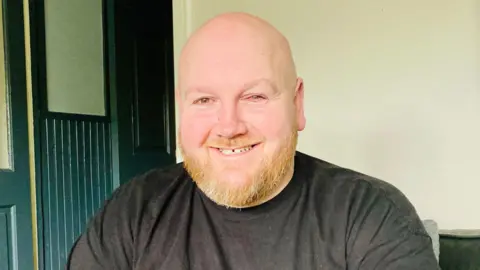 BBC
BBCA donated placenta has been used to help save a man’s eye after an acid attack.
Acid was squirted into Paul Laskey’s face causing severe chemical burns to his eye, “melting” both the inner and outer layers of his cornea.
He had two emergency corneal transplants and three amnion grafts, where tissue from the inner lining of a donated placenta was used to save his eye.
Mr Laskey, from Newcastle, said: “I’m so thankful to the mother who donated her placenta to help people like me who are at risk of losing their sight completely.”
Prof Francisco Figueiredo, consultant ophthalmologist at Newcastle’s Royal Victoria Infirmary (RVI), described the success of the operation as remarkable.
“It was incredible to think that this is possible due to the generosity of a mother,” he said.
‘I couldn’t see anything’
Warning – contains a distressing image
Mr Laskey, 43, was squirted with a corrosive substance when his son was mugged at knifepoint in Newcastle in February 2023.
“It was just burning. Instantly I couldn’t see anything,” he said. “It was horrific.”
He was told he had suffered fourth-degree burns, the most severe you can get.
He said police officers arrived at the scene within minutes and explained that rather than call an ambulance, they should immediately take him to hospital.
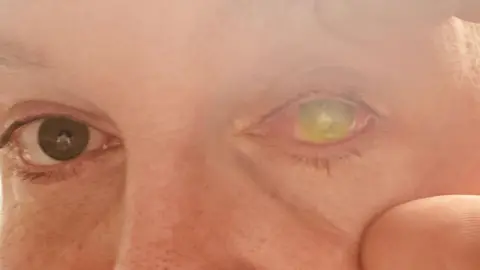 Paul Laskey
Paul LaskeyAt Newcastle’s RVI, emergency medics worked to flush out as much of the acid as possible.
But Mr Laskey was told the damage was so severe, cells within his eye could not repair or regenerate.
The father-of-three said losing his eyesight so suddenly was horrendous.
He said he was confined to lying down in a darkened room for at least six months, because any light coming in was painful and the headaches were “horrific”.
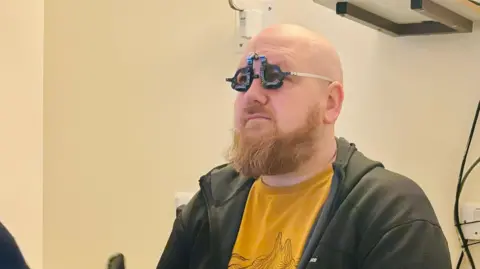 Paul Laskey
Paul LaskeyDoctors explained they were doing everything they could as “the most important thing was to save the eye”.
In the following months, Mr Laskey had several procedures, including the amnion – the name of the tissue taken from the inner lining of the donated placenta – grafts.
His eye saved, doctors are now planning to try and restore more of his eyesight through stem cell treatment.
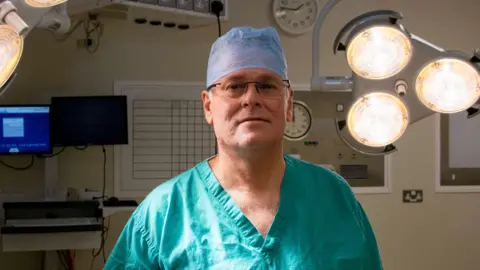 Newcastle Hospitals
Newcastle HospitalsThe RVI’s Prof Figueiredo said: “In Paul’s case, which is really quite severe, we began by removing any residues of the chemical agent that may have still been in contact with the eye, before progressing to intensive, topical, systemic and surgical treatment, using amniotic membrane transplantation.
“It is incredible to think that this is possible due to the generosity of a mother, donating the organ that she has grown to help grow her child. It really is remarkable.”
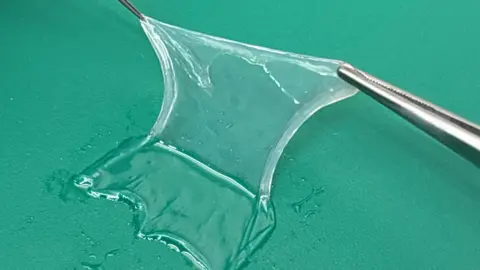 NHS
NHSIn England, the NHS Blood and Transplant’s Cord Blood Bank collects placentas from mothers at University College Hospital, London, and Luton and Dunstable Hospital, Bedfordshire.
Using a donated placenta to help with serious eye injuries is not new. Rich in protein growth factors, they can stimulate the healing process.
After their vital role in growing a baby, placentas are usually thrown away. But a single placenta can make anywhere between 50 to 100 amnion grafts.
Mr Laskey said losing his eyesight and the threat of losing his eye was “devastating” and hoped he would get the chance to meet he mother who donated her placenta to say thank you in person.
The man responsible for the acid attack was jailed in 2024.
Source:
www.bbc.com
Source link


